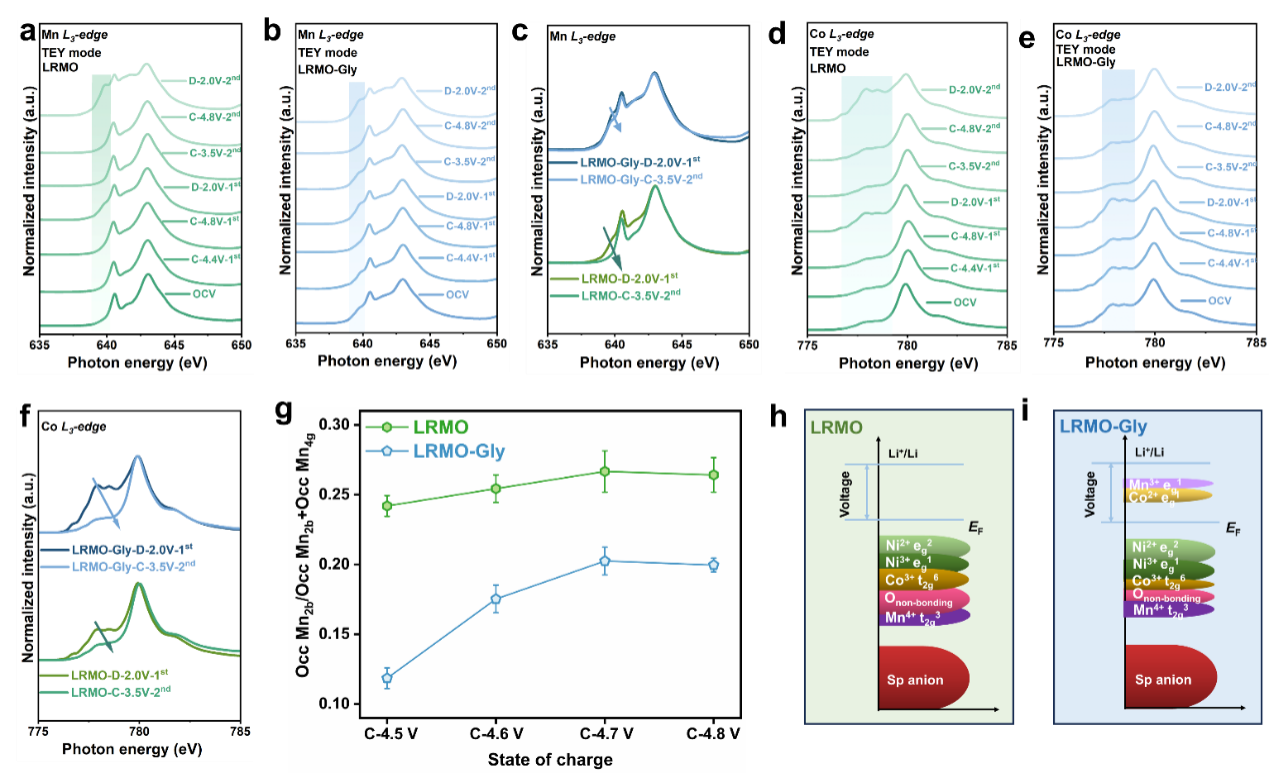Recently, Professor Yingguo Xiao’s team from the School of Advanced Materials (SAM) published a research paper titled “Boosting Initial Coulombic Efficiency in Li-Rich Mn-based Cathodes by Tuning Orbital Hybridization” in the international journal Angewandte Chemie International Edition. This work was selected as a Hot Paper by the journal. Li-rich manganese-based cathode materials are regarded as key candidates for next-generation lithium-ion batteries due to their high specific capacity enabled by anionic redox reactions. However, their practical application is severely hindered by several critical issues that occur during the first charge process (above 4.5 V), including irreversible lattice oxygen loss, transition metal migration, and surface structure reconstruction. These effects result in low initial coulombic efficiency, continuous voltage decay, and capacity fading.

Figure 1. Publication Page of the Research Article in Angew. Chem. Int. Ed
The research team innovatively proposed a strategy to regulate the hybridization between transition metal 3d orbitals and oxygen 2p orbitals, successfully addressing the issue of low initial coulombic efficiency in Li-rich Mn-based cathode materials. Experimental results demonstrated that this approach significantly improved the initial coulombic efficiency from 85.3% to 102.5%, while achieving a high specific capacity of 291.2 mAh·g-1. Neutron powder diffraction was employed to quantitatively determine the oxygen vacancy content in the material, while synchrotron-based soft X-ray absorption spectroscopy confirmed the reduced hybridization between Co/Mn t2g orbitals and O 2p orbitals. This orbital modulation not only effectively suppressed irreversible anionic redox reactions and lattice oxygen loss, but also activated the Co2+/Co3+ redox couple below the Fermi level and suppressed the Mn4+/Mn4+ redox couple, which tends to destabilize the structure. This study provides deep insight into how orbital hybridization influences the reversibility of anionic redox reactions and the activity of redox couples. It also highlights the powerful role of neutron scattering and synchrotron radiation as advanced characterization tools in the development of next-generation energy materials.

Figure 2. Evolution of the Electronic and Crystal Structure of the Cathode Material at Different Voltage States
This work was jointly supervised by Associate Professor Yingguo Xiao from the SAM, Peking University Shenzhen Graduate School, Dr. Yuguang Pu, and Dr. Rui Wang from the University of Cambridge. Tao Zeng, a Ph.D. candidate at the SAM, served as the first author of the paper. The research was supported by the National Key R&D Program of China (Frontier Research on Large Scientific Facilities), the National Natural Science Foundation of China (General and Major Research Programs), the Key Program of Guangdong Basic and Applied Basic Research Foundation, and the Open Research Program of Dongguan Songshan Lake Large Scientific Facility (China Spallation Neutron Source).
Link to the paper: https://doi.org/10.1002/anie.202501777
